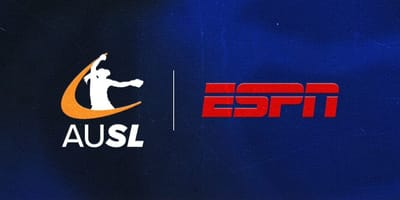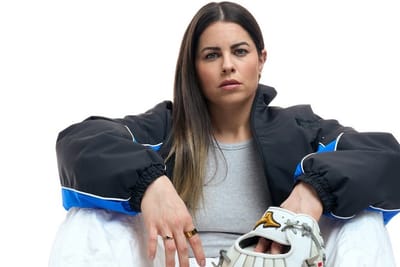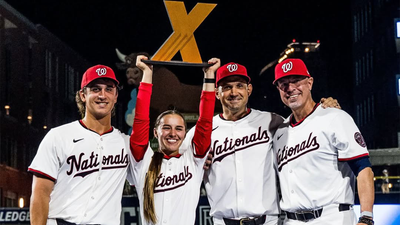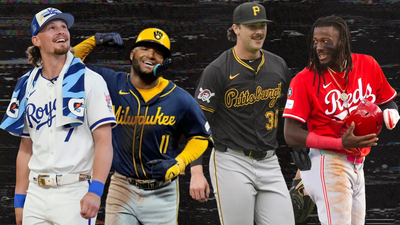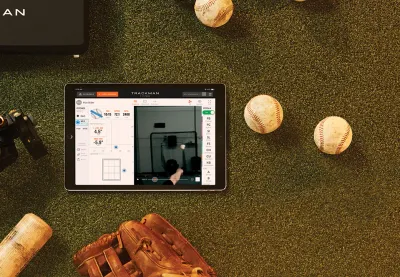
STRAUSS and the Helmet Economy: How a German Workwear Brand Bought Baseball’s Most Valuable Square Inch
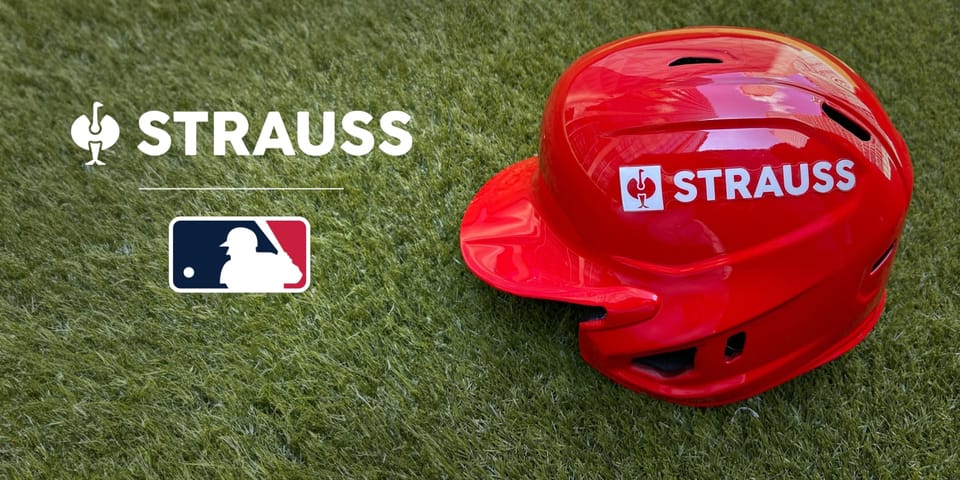
When the 2025 postseason began, one tiny logo hijacked every broadcast angle in October baseball.
A red ostrich and a single word — STRAUSS — suddenly appeared on both sides of every MLB batting helmet. It was clean, uniform, and completely unavoidable. For a game that prides itself on tradition, it was a jarring visual. But for MLB, it was something else entirely: a new inventory class in the sport’s billion-dollar media ecosystem.
The Deal That Changed the View
In September 2024, MLB announced a multi-year partnership through 2027 with Engelbert STRAUSS, a German workwear and safety-gear company founded in 1948. The deal made STRAUSS the first brand ever to appear on batting helmets across every MLB postseason team, and it expanded in 2025 to include all 120 Minor League Baseball clubs for the full season.
Each helmet carries two decals, roughly 5 inches wide and 0.9 inches tall, sitting flush along the temple, directly in the line of broadcast cameras.
MLB never disclosed the contract’s value, but independent analysts pegged the earned-media equivalent exposure at $10–20 million per postseason, depending on the number of games played. Given postseason viewership that topped 50 million cumulative viewers across the 2024 bracket, even conservative CPM math points to a sponsorship ROI that rivals some national ad campaigns.
So why did a European workwear company — better known for outfitting construction crews and electricians — buy space on America’s most iconic sports helmet?

A Calculated Bet on Attention
Engelbert STRAUSS’s U.S. retail push began quietly in late 2023. The MLB deal was its loud arrival.
In a statement last fall, CEO Henning Strauss called the campaign “immense in attention,” noting measurable spikes in web traffic, social followers, and sales volume after the first October rollout.
It worked because the math is simple: every helmet appears in nearly every close-up. Baseball averages 250–300 televised pitches per game, meaning tens of thousands of exposures per postseason series — and millions across the full bracket. Unlike wall signage or digital backdrops, helmet decals guarantee eyeball stability in every frame.
But is the value in the logo itself, or in being the first brand to occupy that sacred space?
Symbolism Meets Strategy
There’s a subtle logic to the placement. Baseball’s batting helmet is the sport’s “hard hat.” STRAUSS sells workwear, safety boots, and protective gear — the visual and thematic alignment is almost poetic.
This wasn’t Coca-Cola or an airline slapping a logo on a sacred uniform. It was a company whose core identity — craftsmanship, protection, durability — actually mirrors the game’s working-class roots.
From a brand positioning standpoint, that might be what made MLB comfortable crossing the line. STRAUSS was “blue collar enough” to fit the baseball ethos.
And a quick google search and click on Strauss’s website— you’ll see the pride and immediately feel the synergy from the partnership.
But that sparks a bigger question: Would fans have reacted the same if the logo read Amazon or Coinbase?
In a single move, MLB managed to both commercialize new space and soften the blow with a brand that symbolically “belongs” on a helmet. That’s strategic business psychology at its finest.
The Hidden Upside: Minor League Saturation
While headlines focused on October, the real business play may be happening in places like Toledo, Biloxi, and Sacramento.

This past season, every Minor League Baseball player — across more than 8,000 games and 31 million annual fans— wore the same STRAUSS logo full-time. That’s year-round, small-market, family-friendly exposure in cities with little overlap with other pro sports.
For STRAUSS, it’s not just about brand impressions — it’s about community penetration. If even 5% of those 31 million fans Google the logo, the brand’s U.S. awareness curve spikes in markets most global companies ignore.
It also gives MLB a test case. If a workwear brand can monetize MiLB helmet space, what happens when the league opens up regular-season MLB helmets next?
The 2025 expansion to MiLB might quietly be phase one of a longer monetization roadmap.
What’s the Helmet Worth?
Let’s play with the numbers.
- MLB Postseason (2024): 40 total games across Wild Card, Division, LCS, and World Series rounds.
- Average broadcast viewership: 5.4 million per game.
- Estimated helmet-visible close-ups per game: 250–300 (via Statcast broadcast data).
- Multiply exposure by reach: you could be looking at hundreds of millions of cumulative on-screen impressions over a full postseason run.
BREAKDOWN:
Analysts project STRAUSS could have derived $10.4M–$17.2M in media-equivalent exposure from batting helmet decals in the 2024 postseason, across televised broadcasts and social/ancillary amplification. Sports Business Journal
If one applies a hypothetical $5 CPM rate to helmet exposures, the implied media value could approach tens of millions — though that is a rough illustration, not a confirmed market value.
So, you throw in the 2025 MiLB deal and everything at 2024 jumpstarted, if STRAUSS paid even a fraction of that in rights fees — say $10–15 million per year — it’s arguably underpriced inventory for one of the cleanest ad surfaces in all of sports.
Has baseball just discovered its next big sponsorship frontier?

Brand Risk and Fan Tolerance
Not everyone’s buying in.
Reddit threads and X timelines lit up instantly with comments like “Sellout sport” and “It looks like a Little League sponsorship.”
But that outrage drives the same metric every marketer craves: name recognition.
Search interest for “STRAUSS baseball helmets” spiked over 400% after the first 2024 game featuring the decals. That’s the paradox of modern sports marketing — backlash is still brand lift.
The open question for MLB? Where does this stop?
Helmets today, sleeves tomorrow, catcher’s gear next? Or will the league preserve at least some “clean” surfaces as a nod to tradition?
The Content Layer: Branded Storytelling
The deal wasn’t limited to uniforms. STRAUSS also sponsors MLB’s “Stolen Base Content Platform,” a social and broadcast segment highlighting speed and hustle — again reinforcing the “craftsmanship meets work ethic” narrative.
That subtle alignment — brand as metaphor, not just logo — suggests MLB’s long game is about layered storytelling, not static signage.
Could we soon see STRAUSS-branded player documentaries, behind-the-scenes training content, or even co-branded workwear collections?
The infrastructure is there.
Speculative Questions Worth Tracking
- Does MLB have a revenue-sharing model with teams for this league-wide inventory, or does the league office capture it entirely?
- Are other brands already bidding on regular-season helmet rights for 2026–27?
- How does STRAUSS measure U.S. conversion — direct sales lift, awareness, or retail partnerships?
- Could MLB use the data from MiLB markets to justify a price hike on future deals?
- And culturally, what’s the breaking point between subtle branding and over-commercialization?
The Business of Ball Takeaway
The STRAUSS deal is a case study in inventory innovation. Baseball has found a new monetizable surface.
At a time when team valuations depend increasingly on media rights and sponsorship layers, every new inch of available real estate matters.
So whether fans love it or hate it, the math wins: one 5-inch logo, hundreds of millions of impressions, and a blueprint for how nostalgia and capitalism will coexist in baseball’s next era.
Because in the modern sports economy, every frame has a price — and STRAUSS just set the market.
